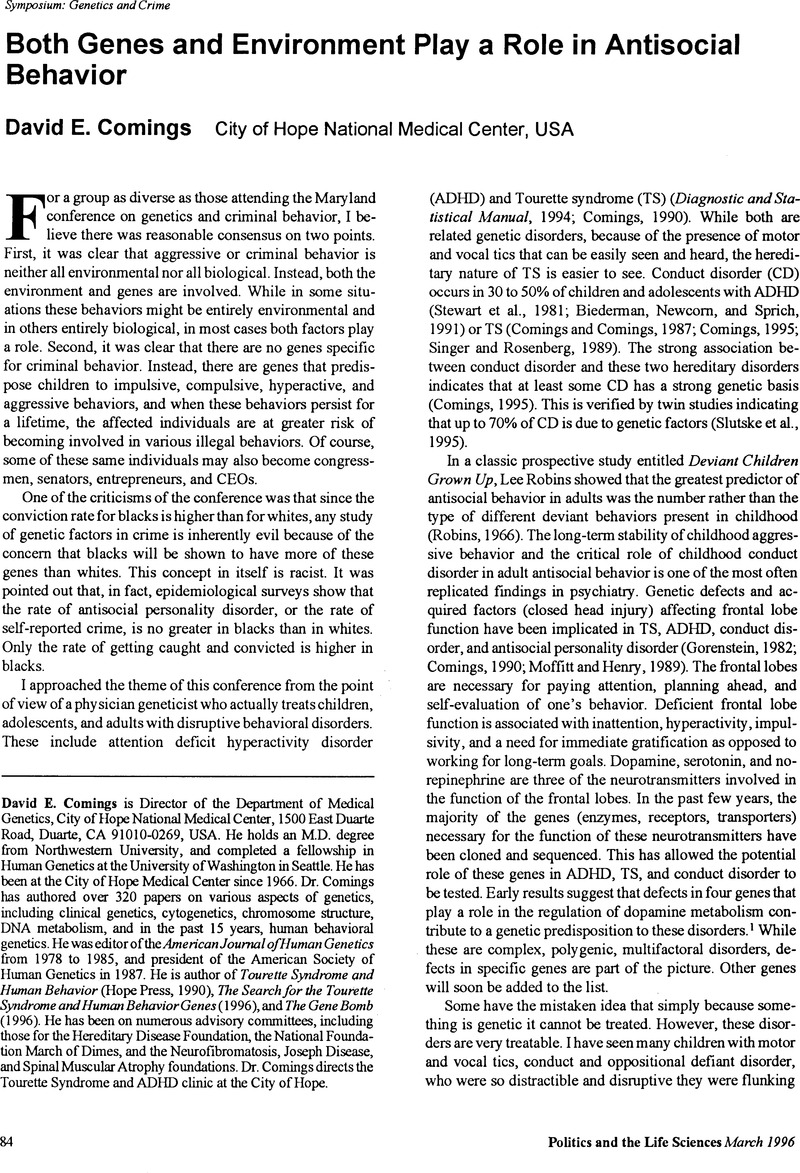Crossref Citations
This article has been cited by the following publications. This list is generated based on data provided by Crossref.
Blank, Robert H.
2005.
The brain, aggression, and public policy.
Politics and the Life Sciences,
Vol. 24,
Issue. 1-2,
p.
12.
Blank, Robert H.
2005.
The brain, aggression, and public policy.
Politics and the Life Sciences,
Vol. 24,
Issue. 1 & 2,
p.
12.
2006.
Biological Influences on Criminal Behavior.
p.
223.
Ellis, Lee
and
Hoskin, Anthony W.
2015.
The evolutionary neuroandrogenic theory of criminal behavior expanded.
Aggression and Violent Behavior,
Vol. 24,
Issue. ,
p.
61.



